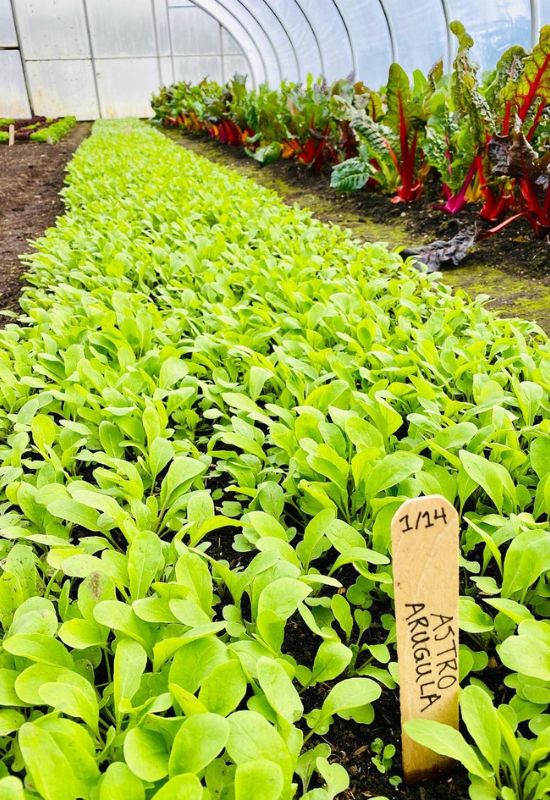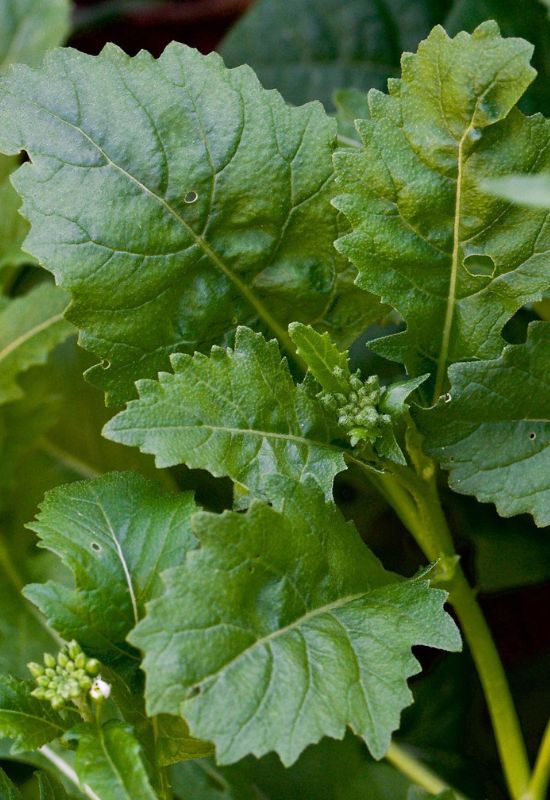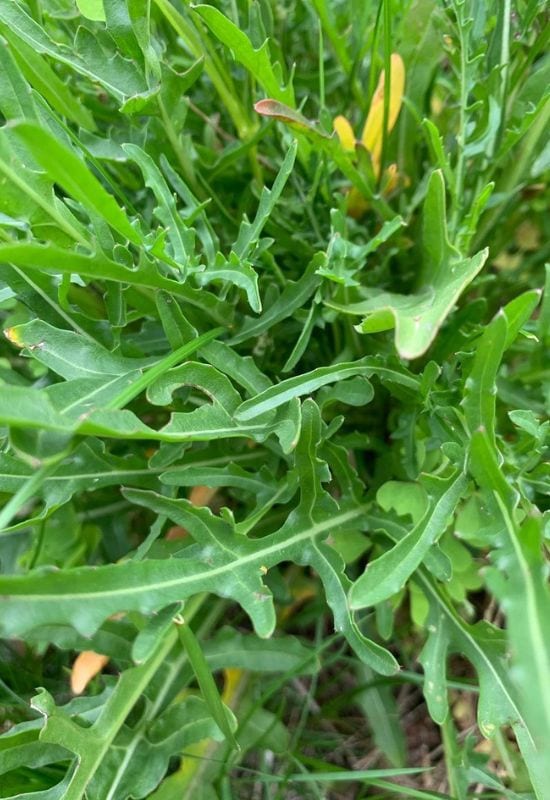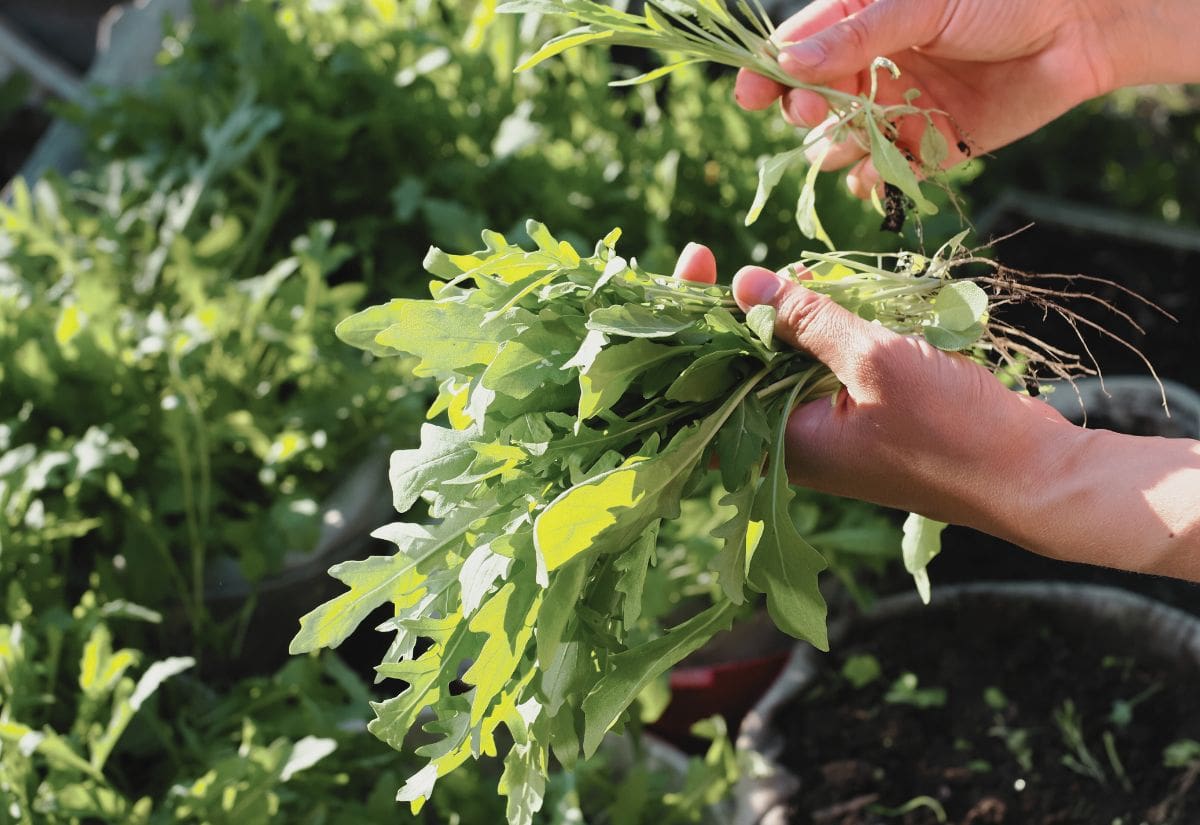
If you are ready to spice up your salad, how about growing some arugula? While arugula is becoming a common sight in grocery stores, these hot bitter leaves can’t compare to harvesting your own fresh from the garden.
Known for its peppery zing, arugula grows quickly and is quite hardy, making it an ideal addition to your leafy green arsenal. It is especially suited to spring and early fall growing, though many places grow this cool-season plant all winter long.
Arugula can either be a “wild” or “salad” type with many varieties each.
Overall, each variety shares similar growth requirements and primarily varies in flavor, harvest time, and leaf shape and size, so choosing a favorite is really a matter of personal taste.
Keep reading to see our top 10 arugulas varieties so you can choose the one that best suits your garden and culinary preferences.
Two Types of Arugula
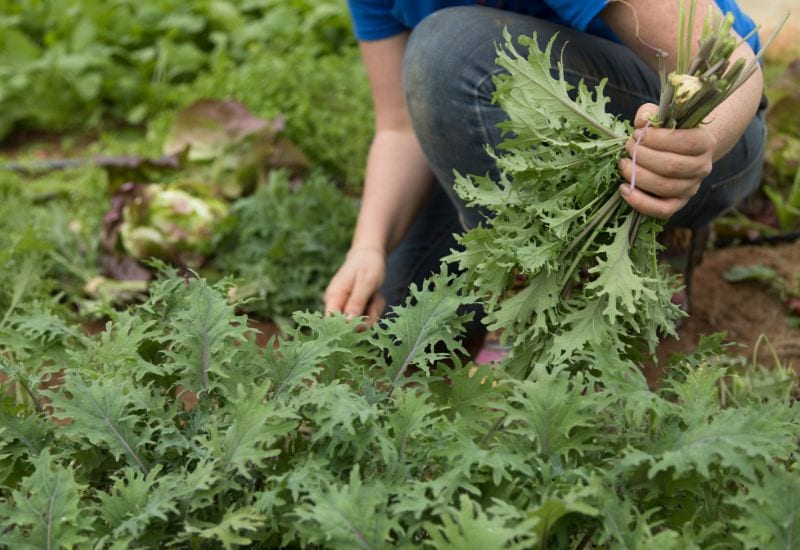
Since the 1990s, arugula has become very popular yet it has been cultivated for centuries by foodies in many different cultures.
Originally from the Mediterranean, evidence of arugula has been found amongst the ancient Egyptians, Romans, Israelites, plus many other peoples in Europe and western Asia.
It has gone by many names and is now commonly referred to as Rocket, Salad Rocket, Roquette, or Rucola, to name a few.
There are two main types of arugula: wild arugula and salad (or common):
Whichever type you grow, arugula is a cool-season vegetable that is usually planted for the spring or fall, and can be grown under cloches in mild winters.
Arugula bolts very easily in hot weather, and it becomes rather hairy and quite bitter which is not a desirable addition to a salad.
All parts of an arugula plant are edible, from the pretty flowers (with a mild arugula flavor) to the tasty seed pods, but it is usually grown for its peppery-flavored leaves. They can be eaten fresh in salads or sauteed into many dishes.
Top 10 Arugula Varieties to Grow in Your Garden
Here are some great arugula flavors that come highly recommended for the home and market garden:
1. Astro
This salad arugula is one of the most popular varieties of arugula for good reason. It is one of the first to mature with baby leaves being ready in 21 days and mature leaves ready anywhere from 30 to 40 days after germination (and germination will usually only take a few days).
Astro has a mild flavor that many anti-arugula eaters will like. Since they get spicy in the heat, this is another reason to plant them in the cool seasons.
For a salad variety, it is very heat tolerant and resists bolting. At the same time, it is very cold hardy and can grow all winter long with slight protection in many climates.
The leaves are less lobed-shaped and more strap-like, and the white blossoms have pretty pink veins that should be harvested as soon as they open for great tasting flowers.
Succession plant Astro in the early spring so you can have several harvests before the heat of summer kicks in. Once summer is over, plant it again and it will grow into the early winter.
Astro is very versatile for many gardening styles, and it works well for soil cultivation, hydroponic growing, and as microgreens.
2. Sylvetta
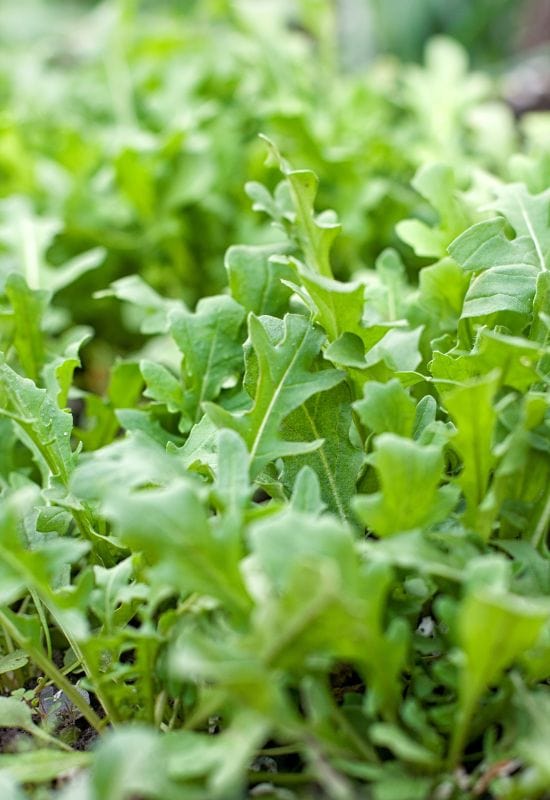
Sylvetta is a wild, heirloom arugula that is also very popular. The plants are compact with relatively smaller leaves and they have a mild though pungent flavor.
Like all wild arugula, Sylvetta has fairly good heat tolerance and resistance to bolt, though it still does best in cool weather. Baby leaves can be harvested in 35 days after germination, and the mature leaves are at their peak at around 50 days.
Another excellent option for microgreens, and hydroponic growing, Sylvetta is an excellent all-around arugula.
Sylvetta arugula can take a while to germinate (up to 2 weeks), so water and wait patiently after the seeds have been sown.
3. Runaway

Though it is a salad variety, Runaway has many benefits of both wild and common strains. It grows quickly (harvest can start after 21 days) but the plant’s leaves and flavor are reminiscent of the wild ancestors. It is often described as having a mild flavor that is both nutty and peppery.
Runaway is an excellent option for hydroponic growing, but it also makes a great addition to the garden. Make the most of its fast growth but succession planting the seeds every two weeks to have a continues harvest throughout the spring.
4. Esmee
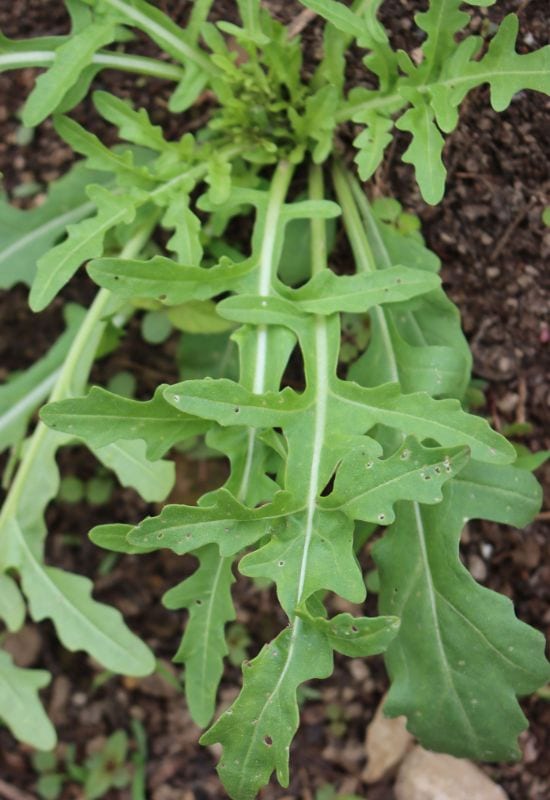
Another salad green, Esmee is readily available from many seed companies and for good reason. Sought by “dirt farmers” and hydroponic growers alike, baby Esmee can be harvested in 21 days and it is fully mature for harvest at 40 days.
It has oak shaped leaves that are heavily parted and quite serrated. They are very good raw, even when mature. In fact, Esmee have possibly the best flavor of all varieties when fully mature, so make sure to time your planting so they have enough time to finish growing.
Esmee are not very spicy when grown in cool weather, so make sure to avoid the hot summer to keep the flavor at its peak.
5. Bellezia
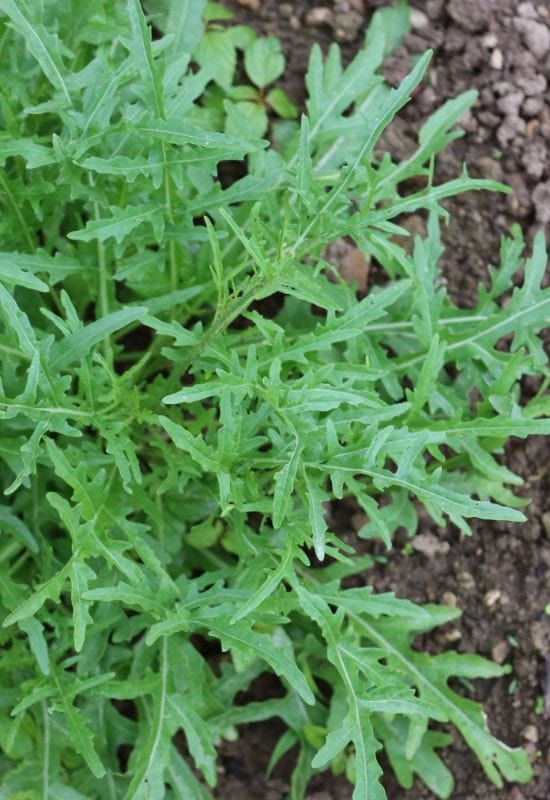
This wild arugula takes a fairly long time to mature but it is certainly worth waiting to reap the advantages. Baby leaves are ready to harvest around 35 days and the plant is mature at 51 days. Bellezia has dark green leaves with serrated edges and a pungent, but nice, flavor.
Bellezia grows dense, upright plants that are easy to harvest. They are also very well suited to container growing, so try them on your patio, balcony, or even as an indoor plant.
Bellezia have resistance to downy mildew, so this is the variety to grow if you are plagued with this problem in your garden.
6. Dragon’s Fire
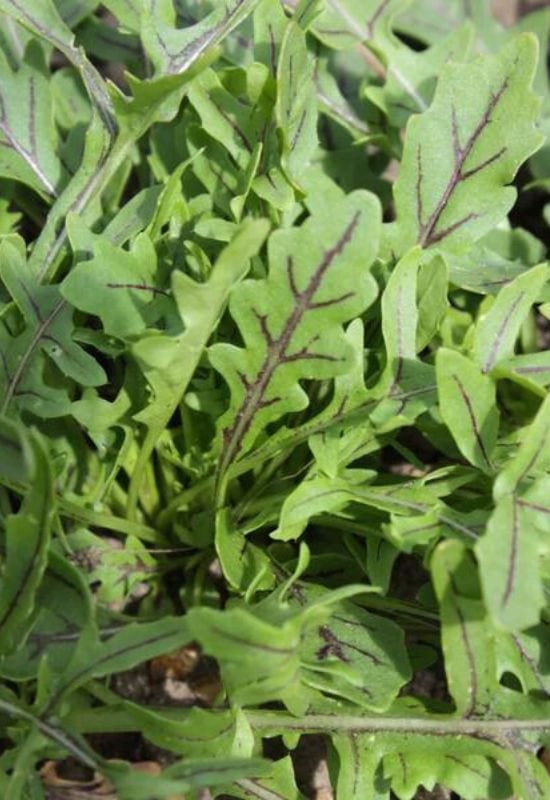
As the name suggests, this is a wild variety that deserves a place in your garden. With a zesty, spicy flavor, it certainly has some fire to it.
Dragon’s Fire arugula produces vigorous growth of nice, uniformly shaped leaves. To make them even more attractive, there are dark purple veins along the canters of the leaves.
Grow Dragon’s Fire to add a little extra color to your garden and your salads.
7. Pronto
Though a salad variety itself, Pronto is a good middle ground between salad and wild types of arugula.
It has a mild, peppery flavor and fast growth of a salad arugula, while sporting bright, shiny green leaves that look more like the wild pant.
Make sure to sow the seeds of Pronto shallow, or germination will be delayed or stopped altogether.
8. Wasabi
If you like wasabi on your sushi, then Wasabi arugula is for you. In fact, this wild variety can be so hot that it can be used as a replacement for the spice in many recipes. As a perk over the spice, Wasabi arugula is also high in Vitamin A.
Its leaves are softly serrated but not parted, and are a striking emerald green. The plants grow to be about 10cm to 20cm (4-8 inches) tall and they are mature in around 35 days after germination.
Unfortunately, Wasabi bolts quite easily, so make sure to sow it early enough in the spring, plant a new crop every two weeks, and you should have a good harvest until the summer heat sets in. And don’t forget, you can also eat the yellow flowers once the plant has bolted!
Despite its hot nature, Wasabi arugula is quite frost hardy so you can also sow another planting at the end of summer and harvest it into the fall or early winter.
9. Wild Rocket
Wild Rocket is a wild variety as you might assume. It is a really interesting variety to grow, but make sure you don’t accidentally pull it out because Wild Rocket has ragged, weedy looking leaves and it looks more like a weed than a healthy vegetable.
It has a strong flavor, that is nonetheless better than many other wild arugulas. Wild Rocket can grow to 50cm (20 inches) tall in 40 days, and it is a very nutrient dense variety.
10. Italian Cress
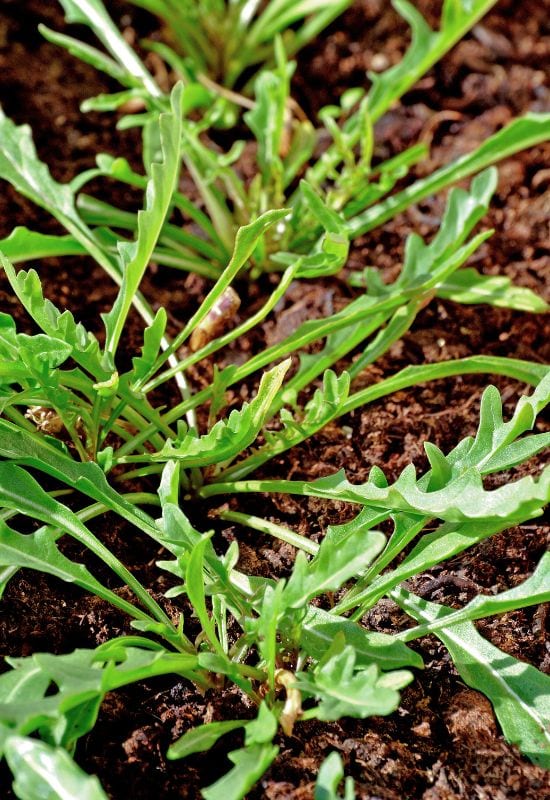
Another arugula to grow for its unique leaves is Italian Cress. This salad types has large leaves that are reminiscent of lettuce.
Not only does this greatly simplify harvesting, but it also makes them great for salads and sandwiches. They are also good sauteed or cooked into soups and stews.
Grow Italian Cress when you are strapped for time, and want to quickly grab one or two leaves to add a whole lot of flavor to your dinner. Italian Cress also mature fairly fast and you can harvest the large leaves after only 30 days.
Italian Cress are great for indoor potted plants, and for producing a whole lot of greens in a small area.
Arugula Microgreens
Arugula can also makes an excellent microgreen. While you can buy a particular seedling pack marketed for microgreens like this one here, any arugula can be grown and eaten as a microgreen. As we mentioned above, Astro and Sylvetta make excellent microgreens as well as delicious salad greens.
Check out this article from Epic Gardening on growing arugula microgreens for a detailed walk through of how to get started.
Conclusion
Having first tasted arugula that was bought from a grocery store in the middle of summer, I assumed there was only one type and that it was all gross. Little did I realize at the time that there are many different cultivars, each with its own unique look and flavor.
Once you start growing your own arugula, you will quickly notice there is a big difference between “bitter and gross” and “pungent and spicy”.
If you have been turned off of arugula in the past, I hope this list above will help you find a variety that suits you, so you can get back into growing it.

Written By
Amber Noyes
Amber Noyes was born and raised in a suburban California town, San Mateo. She holds a master’s degree in horticulture from the University of California as well as a BS in Biology from the University of San Francisco. With experience working on an organic farm, water conservation research, farmers’ markets, and plant nursery, she understands what makes plants thrive and how we can better understand the connection between microclimate and plant health. When she’s not on the land, Amber loves informing people of new ideas/things related to gardening, especially organic gardening, houseplants, and growing plants in a small space.

